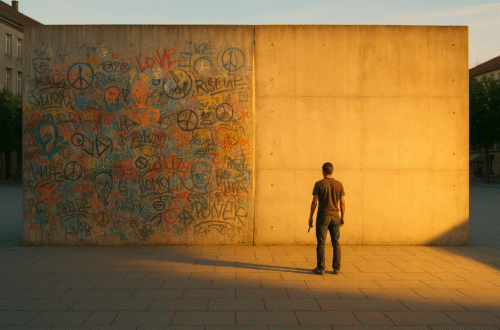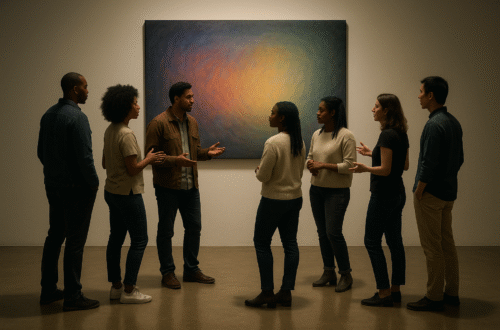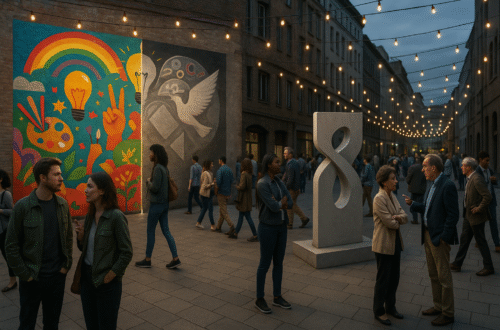My siblings and I were having a discussion earlier this week that reminded me of a class I took years ago. My brother had just returned from a wonderful vacation in the Mediterranean, touring several countries on the European continent. Of course, it was a tour highlighted by the beauty of cathedrals and statues that attested to the culture of beauty we often effusively embrace.
And who could fault that? There is something deeply stirring about the architectural grandeur of a Gothic nave or the muscular poise of a marble figure standing timeless against a Mediterranean sky. Such beauty can feel like a kind of revelation, evidence of the human capacity for harmony, proportion and transcendence. It is no wonder we treasure it.
As I listened to his stories, I was reminded of a lecture I once attended, in a course ironically titled “Beauty as a Path to the Divine.” The professor, a quietly provocative fellow with a gift for unsettling the obvious, proposed that beauty is never neutral. That while beauty can heal, it can just as easily conceal. And indeed, some of the world’s deepest wounds have been covered over with gold leaf.
This, then, is our next hidden terrain: the way violence can be veiled and often sanctified through aesthetics.
Some of the most enduring forms of domination in history have not shouted. They have dazzled. They have stood silent and gleaming in marble. They have adorned the entrances of great cities and gazed down from frescoed ceilings. We rarely think of them as violent but only because they do their work with elegance.
Consider the statues that line the venerable squares and university halls. Roman emperors, colonial administrators, kings, generals, and “benefactors.” Their features are idealised, their robes draped in studied gravitas. They are beautiful and intentionally so. Yet that beauty often functions not to inspire, but to obscure. To quiet the memory of conquest. To sanctify the language of empire.
Violence, you see, often cloaks itself in aesthetic legitimacy. It arrives wrapped in refinement speaking Latin. It hangs on gallery walls with a small brass plaque and the soft approval of centuries. We admire the craftsmanship and forget the cruelty.
Even now, in our digital age, we are not immune. The images that flood our feeds—travel photography, branding campaigns, political pageantry—all carry the residue of this aesthetic harm. Consider the fashion spread that uses a crumbling tenement as backdrop. The tourism ad that reduces sacred land to a backdrop for leisure. The heritage museum that omits whose heritage was erased.
In these cases, aesthetics doesn’t simply cover violence. It performs it.
There is a deeper danger here, and it is this: once something is made beautiful, it becomes harder to question. The symmetry itself persuades. The elegance seduces the eye. Who dares deface a statue? Who questions a liturgy when it is sung in perfect four-part harmony?
And yet we must.
To critique beauty is to risk being labelled a barbarian. But perhaps the greater barbarism is to allow harm to endure because it has been well-dressed.
This is not, let me stress, a plea for iconoclasm. I would be the last to throw stones at stained glass. It is a plea to interrogate beauty. A request that we ask of every lovely thing: What truth does this reveal—and what truth does it hide? What harm was made invisible for this to exist?
When we ask and answer these questions, and honour the people whose bodies were defiled, whose lands plundered and sacred spaces desecrated, we then begin to observe ethical aesthetics.
So this week, I invite you to perform a kind of aesthetic archaeology:
- Walk through a space you consider beautiful—a city square, a sacred building, a gallery.
- Ask: What stories are being honoured here? And what stories have been smoothed over, silenced, or forgotten?
- Take note of one object in your life that you find beautiful. Learn about its origin. Whose hands made it? Whose voices are not heard in its telling?
And then, as always, bear witness not only the harm, but the hope.
- Seek out beauty that does not flatter power but comforts the wounded.
- Art that disrupts the silence of the past.
- Architecture that invites in those once excluded.
There is such a thing as redemptive beauty. Beauty that tells the truth—gently, but without apology.
If violence can hide in the aesthetic, then healing can speak through it as well.
Let us be lovers of beauty still—but not at the cost of our sight.





